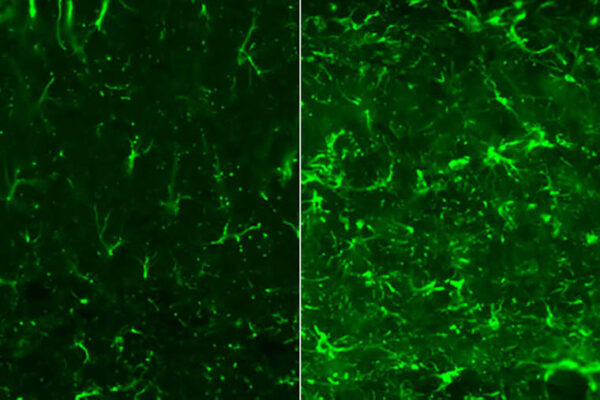Smoking shrinks the brain, according to a study by researchers at Washington University School of Medicine in St. Louis. The good news is that quitting smoking prevents further loss of brain tissue — but still, stopping smoking doesn’t restore the brain to its original size. Since people’s brains naturally lose volume with age, smoking effectively causes the brain to age prematurely, the researchers said.
The findings, published in Biological Psychiatry: Global Open Science, help explain why smokers are at high risk of age-related cognitive decline and Alzheimer’s disease.
“Up until recently, scientists have overlooked the effects of smoking on the brain, in part because we were focused on all the terrible effects of smoking on the lungs and the heart,” said senior author Laura J. Bierut, MD, the Alumni Endowed Professor of Psychiatry. “But as we’ve started looking at the brain more closely, it’s become apparent that smoking is also really bad for your brain.”
Scientists have long known that smoking and smaller brain volume are linked, but they’ve never been sure which is the instigator. And there is a third factor to consider: genetics. Both brain size and smoking behavior are heritable. About half of a person’s risk of smoking can be attributed to his or her genes.
To disentangle the relationship between genes, brains and behavior, Bierut and first author Yoonhoo Chang, a graduate student, analyzed data drawn from the UK Biobank, a publicly available biomedical database that contains genetic, health and behavioral information on half a million people, mostly of European descent. A subset of over 40,000 UK Biobank participants underwent brain imaging, which can be used to determine brain volume. In total, the team analyzed de-identified data on brain volume, smoking history and genetic risk for smoking for 32,094 people.
Each pair of factors proved to be linked: history of smoking and brain volume; genetic risk for smoking and history of smoking; and genetic risk for smoking and brain volume. Further, the association between smoking and brain volume depended on dose: The more packs a person smoked per day, the smaller his or her brain volume.
When all three factors were considered together, the association between genetic risk for smoking and brain volume disappeared, while the link between each of those and smoking behaviors remained. Using a statistical approach known as mediation analysis, the researchers determined the sequence of events: genetic predisposition leads to smoking, which leads to decreased brain volume.
“It sounds bad, and it is bad,” Bierut said. “A reduction in brain volume is consistent with increased aging. This is important as our population gets older, because aging and smoking are both risk factors for dementia.”
And unfortunately, the shrinkage seems to be irreversible. By analyzing data on people who had quit smoking years before, the researchers found that their brains remained permanently smaller than those of people who had never smoked.
“You can’t undo the damage that has already been done, but you can avoid causing further damage,” Chang said. “Smoking is a modifiable risk factor. There’s one thing you can change to stop aging your brain and putting yourself at increased risk of dementia, and that’s to quit smoking.”
Chang Y, Thornton V, Chaloemtoem A, Anokhin AP, Bijsterbosch J, Bogdan R, Hancock DB, Johnson EO, Bierut LJ. Investigating the relationship between smoking behavior and global brain volume. Biological Psychiatry Global Open Science. Dec. 11, 2023. DOI: 10.1016/j.bpsgos.2023.09.006
This work was supported by the National Institute on Alcohol Abuse and Alcoholism of the National Institutes of Health (NIH), grant numbers U10AA008401, R01AA027049 and R56AG058726; and the National Institute on Drug Abuse of the NIH, grant numbers K12DA041449 and R01DA044014. This content is solely the responsibility of the authors and does not necessarily represent the official views of the National Institute on Alcohol Abuse and Alcoholism, the National Institute on Drug Abuse or the NIH.
About Washington University School of Medicine
WashU Medicine is a global leader in academic medicine, including biomedical research, patient care and educational programs with 2,800 faculty. Its National Institutes of Health (NIH) research funding portfolio is the third largest among U.S. medical schools, has grown 52% in the last six years, and, together with institutional investment, WashU Medicine commits well over $1 billion annually to basic and clinical research innovation and training. Its faculty practice is consistently within the top five in the country, with more than 1,800 faculty physicians practicing at 65 locations and who are also the medical staffs of Barnes-Jewish and St. Louis Children’s hospitals of BJC HealthCare. WashU Medicine has a storied history in MD/PhD training, recently dedicated $100 million to scholarships and curriculum renewal for its medical students, and is home to top-notch training programs in every medical subspecialty as well as physical therapy, occupational therapy, and audiology and communications sciences.
Originally published on the School of Medicine website



